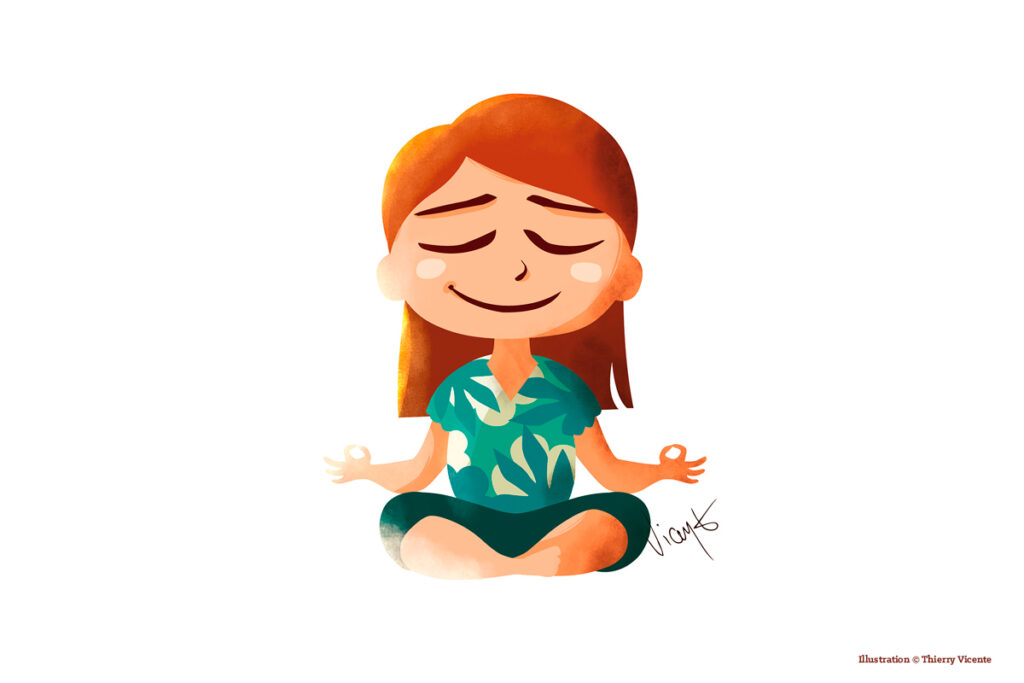[LUM#20] At school, the unthought body
The place of the body in school, whether in motion or at rest, is a real challenge for researchers in education sciences. What place should physical education and sports have in school curricula? And beyond that, how should the body be considered in a holistic approach to education? Fabien Groeninger, researcher at the Interdisciplinary Laboratory for Research in Didactics, Education, and Training1, tackles these questions head-on.

"Long live PE! " This was the tweet posted on August 7, 2021, by the Minister of National Education, Youth, and Sports to congratulate the medalists at the Tokyo Olympics. "The success of our teams illustrates the quality of teaching these sports in schools," added Jean-Michel Blanquer, addressing the newly crowned basketball, handball, and volleyball players.
Is the success of these athletes really attributable to the famous physical education and sports classes taught in middle school and high school? In any case, that's not always the opinion of these champions, who were quick to share their thoughts. "It wasn't the two measly hours of PE per week in my middle school schedule that inspired me to play basketball," responded basketball player Evan Fourrier in an opinion piece published in the Huffington Post.
Motionless hours
These two tiny hours for high school students even represent "a decline in the number of hours in secondary school, " adds Fabien Groeninger, researcher and lecturer at the Faculty of Education at the University of Montpellier. And for younger children, 30 minutes of physical education per day has been in effect since the end of 2020 and the post-COVID period. Fabien Groeninger considers this requirement paradoxical, "because it means that some children could remain inactive for several hours a day," says the specialist in the history of physical education in schools, who is concerned about these hours of inactivity.
Remaining still at school is precisely one of the social constraints specific to the school system highlighted by the researcher. "It is an obedient, domesticated, and standardized body that the French school system has shaped through the classroom setting, where children sit all day long," explains Fabien Groeninger.
Days when sport was still struggling to find its place, even though physical education had long been part of the school curriculum, albeit in a very different form from today. "The Third Republic assigned it civic, patriotic, hygienic, and economic purposes, " the researcher points out. Gymnastics and shooting for boys with the aim of training fighters, and "basketball" for girls, an activity supposed to "strengthen the abdomen and prepare for motherhood."
Reaffirm its legitimacy
The sporting aspect was only taken into account much later, and it was not until 1962 that the discipline was officially recognized, although it struggled to gain acceptance. In fact, physical education teachers, who were initially under the authority of the Ministry of Youth and Sports, were not integrated into the National Education system until 1981.
Physical education and sports remain a subject that must constantly reaffirm its legitimacy in the face of so-called intellectual disciplines, and teachers sometimes suffer from a form of unconscious condescension on the part of the rest of the teaching staff, too often finding themselves reduced to the role of school activity leaders. And when it comes to allocating teaching hours, it is often the physical education teacher who is stripped down to dress up the math or history-geography teacher... For the researcher, this structuring by discipline , "where each subject pulls the blanket toward itself," limits the overall vision, creating divisions of which physical education is one of the first victims.
Comprehensive education
Beyond the sporting dimension, there is also the question of the role of the body in learning. "The body-mind dualism characterizes French schools through the dichotomy between cognitive learning and physical, manual, and emotional learning. This hierarchy between the body and the mind reflects a lack of understanding of children's learning mechanisms, motivation, and interests , " explains Fabien Groeninger, who laments the lack of consideration given to the body in schools.
However, research in educational science has demonstrated the importance of taking the body into account in terms of well-being at school, but also for motivation. These mechanisms have also been highlighted by child psychology and have been used in progressive education since the late 19th century with the concept of holistic education, in which "the different facets of the human being are taken into account without compartmentalizing cognitive, physical, and psychological development, " explains the researcher.
Although many initiatives in this direction are beginning to emerge, they still too often depend on the goodwill of teachers, whereas in Finland, for example, there are large-scale projects aimed at integrating physical activity into the school day without limiting it to a single activity. The Finnish Schools on the Move project, for example, includes regularly scheduled breaks so that children do not remain seated for more than two hours, while relaxation exercises prepare students to concentrate on all school activities. More than 90% of Finnish schools participate on a voluntary basis.This is an inspiring initiative in the run-up to the 2024 Paris Olympics, which are sure to bring the issue of sport back to the forefront. "The body cannot be reduced to program elements: it is an inherent part of any overall reflection on our education, " concludes Fabien Groeninger.
Read:
- Mathieu Depoil, Fabien Groeninger, Delphine Patry, Sylvain Wagnon, Integral Education: Towards Individual and Collective Emancipation, ACL Atelier de création libertaire, 2022.
- Yoga on the program
Listen to:
- The podcast of the program A l’UM la science with Sylvain Wagnon, who questions the place of the body in school.
Find UM podcasts now available on your favorite platform (Spotify, Deezer, Apple Podcasts, Amazon Music, etc.).
- Lirdef (UM, UPVM)
↩︎